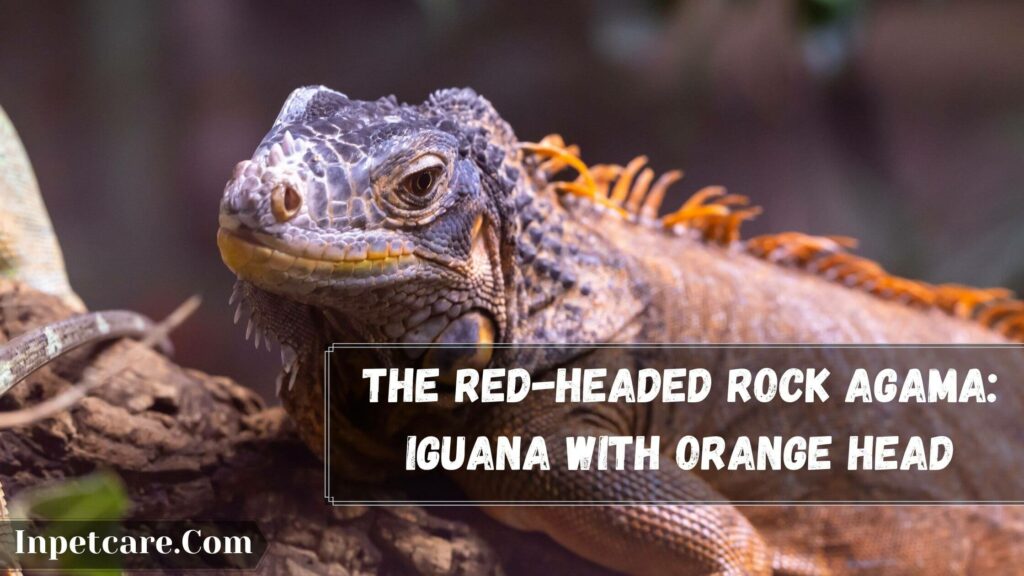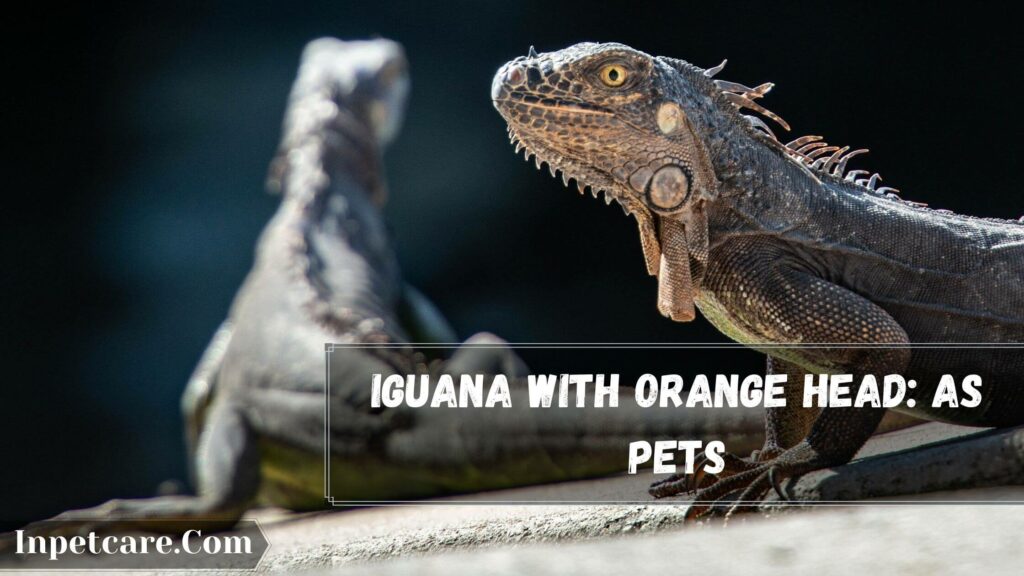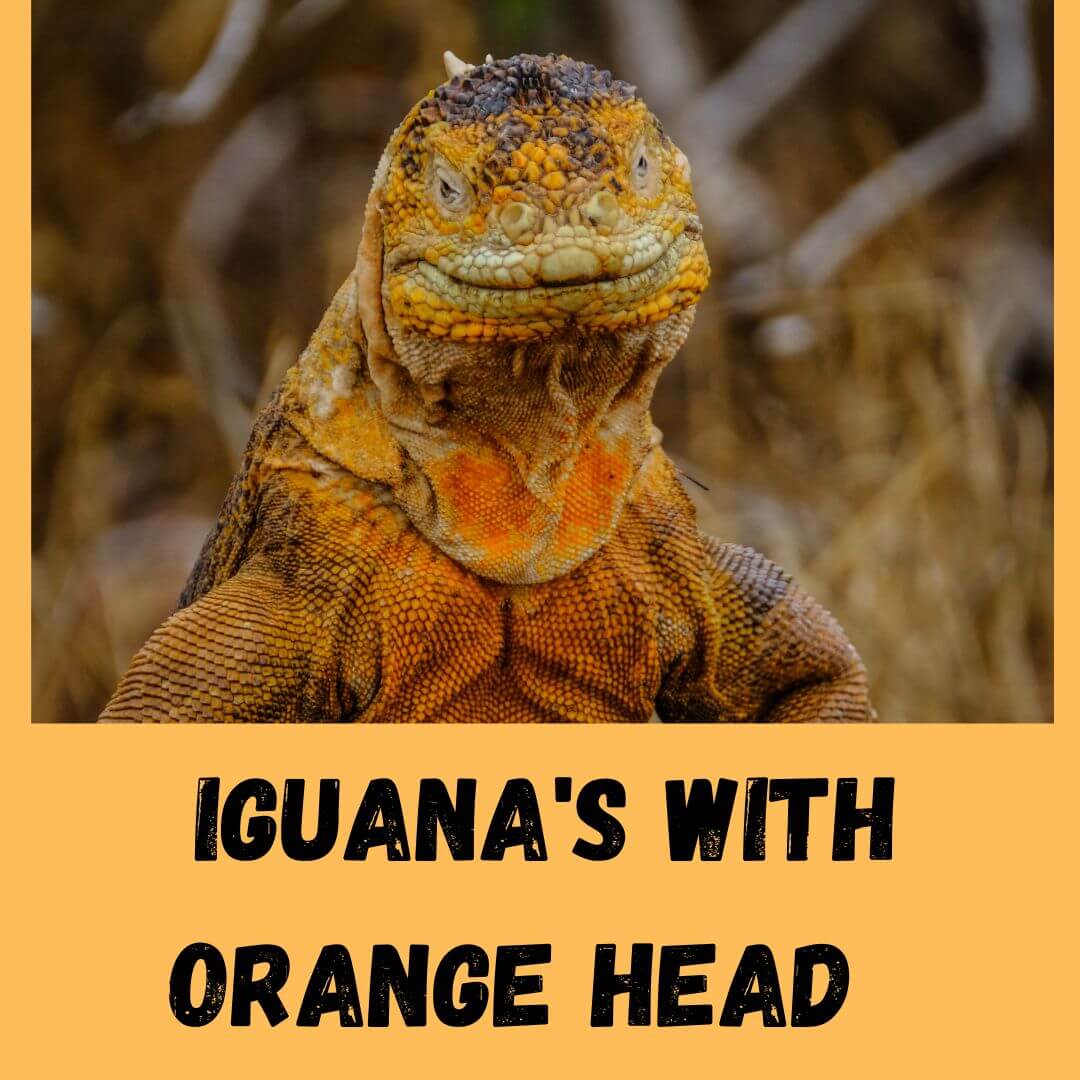Reptiles as pets have been popular for decades among people living in the United States. But, not all snakes are suitable for keeping as pets. When we talk about pets, a reptile with a calm temperament and non-poisonous is considered friendly for keeping at home. One such reptile is Iguana With Orange Head.
Therefore there are many common Iguana, including green iguanas, that many reptile enthusiasts are keeping. Being an iguana enthusiast, you may want to look at different Iguana species to add a rare addition to your vivarium. One such Iguana that is of interest is an Iguana with orange head.
Therefore, in this article, we will look at iguanas with an orange head and learn as much as we can about them. Iguana with orange head is commonly known as Red headed rock agama. Let’s take a look at what exactly an agama is.
Post Contents
The Red-Headed Rock Agama: Iguana With Orange Head

Iguana with the orange head is known as Red headed Rock agama and rainbow Agama. Agama is a species of lizard from the family Agamidae. The Iguana with an orange head comes with a length of around 5.1-11.8 in total. The males of this species can be longer than 3.0-4.7 inches compared to the average females.
There are many other species of an Agama. But here we are talking about the Red headed Agama that has a strike on the tail with 6-7 dark patches along its sides. They can be easily identified by their brown back limbs, a seat with a light strike down the middle and a white underside.
They are widely distributed in Madagascar, Kenya, Nigeria, Ghana, Uganda, Mali and many others. The Iguana with orange head was first introduced during a reptile trade in Southern Florida. These species are well suited to arid conditions and remain active throughout the day.
These lizards are primarily insectivorous, but they are also known to eat some small mammals, including vegetation around the wild—the open uses its tongue to catch its prey. The mucus gland present on their tongue helps them get a better hold of the small game.
Iguana With Orange Head: Temperament
They are highly territorial and can do whatever it takes to claim their space. They even fight with other males in their social group for their freedom and leadership. Apart from that, they tend to be very dominant and can only gain their group if they succeed in eliminating the existing male leader “cØck”. They are also known to establish a colony outside in the wild and form a territory.
The leader of the Agama is known as cØck in its settlement or group. Only the leader can mate with the female in this group. They usually mark their territory near a physical object like trees or a big boulder. If there is no physical object nearby, the Red-headed rock agama will start to look for other places.
In many cities and urban areas, the orange-headed Iguana typically fights, which is common because of the scarcity of higher premiums. These reptiles congregate on boulders. They can be raised as non-aggressive lizards when bred and kept as pets. At first, they don’t like being handled and may even be jumpy.
Handing them too much can cause them stress. That is why try to handle your reptile as little as possible. They will look like a cuddle pet, but they are not so. However, they’re suitable for both beginner and intermediate reptile owners.
Before adopting any reptile, be ready for a long-term commitment and responsibility. If you are not prepared to provide the necessity and the proper environment for your pet, then Iguana with orange head or Agama may not be the right pet for you.
Iguana With Orange Head: Diet
The Iguana with the orange head is a natural insectivorous or omnivorous who thrives on a high-quality protein diet. It is important to feed them protein-rich insects like mealworms, super worms, and even crickets. They need to be fed twice or thrice per week, depending upon their appetite, activity level, and personality.
At each serving, Agama is expected to eat 15-20 crickets or ten super worms. Adult Iguana with the orange head can eat 40-50 mealworms. They should always have fresh water available that is easy to access. Plus, it is important to feed your pet frozen Pinky mouse as an occasional treat to keep them going and interested in eating.
Iguana With Orange Head: Reproduction
Talking about the reproduction of this species, females are usually sexually mature in 1-1.6 years, whereas males can take almost two years. The wet season or the area that receives constant rainfall is a suitable ground for them to reproduce. After mating and proper fertilization, the female will start digging a hole about 2 inches deep using her claws and snout in the soil.
They usually like to dig in Sandy’s damp soil covered with vegetation or grass. That land also receives plenty of sunlight during the day. The female Iguana with an orange head can lay about 12-20 eggs. With proper incubation, the eggs take 8-10 weeks to hatch. The hatchling will be the size of around 1.5 inches or 3 inches with the tail.
Talking about breeding, it is a fairly simple process. Avoid housing two males together as it can lead to territorial fights. It would help if you had a male with one or more females for breeding purposes. It is best to get them introduced and mate in March or May when the days are typically longer.
Have an egg-laying box in the enclosure if you notice the females getting round with eggs. At the first breeding, the Red-headed Agama can lay up to 5-7 eggs, but afterward, they can lay up to 20 eggs in a clutch.
Once your pet lays her eggs, remove the eggs right away from her enclosure to put them in an incubator.
That incubator must have a temperature of about 85 degrees Fahrenheit. Depending on the constant temperature and type of care, the eggs will take around three months to hatch.
Interesting Further Reading
- How Long Does It Take For An Iguana To Grow?
- What Fruits Can Iguanas Eat? 2022 Updated List
- How To Take Care Of A Blue Iguana? (2022)
Iguana With Orange Head: As Pets

As Iguana with orange heads or Agama can live for about 20 years and captivity. So, it would help if you were ready for a long-term commitment. They have many other needs like tank lighting, heating, and substrate. The best tank type for keeping an Iguana with the orange head is made from glass.
If you are looking to house a pair (1 male & 1 Female), have at least 100 gallons of size. Being a reptile that depends on external lighting and heating sources, a heating pad will be necessary on the bottom of its enclosure. Heating and UVB bulbs are also recommended to have.
Talking about the substrate, it is best never to use the one made from loose particles as it can be ingested by your pet. Newspapers can be used as bedding. Other than newspapers, you can use wood chips, coconut husks, or even sand. But these are not very good as they pose the risk of impaction.
For bedding purposes, you should line the bottom of the enclosure with reptile carpet. Talking about the lighting, the setup should mimic the natural light of the day in their enclosure. You should keep the lights on for at least 8-12 hours and then turn them off during the night time or evening.
Not only, It is important to have a large glass tank but also to decorate it properly. Without proper equipment and decoration, your pet is likely to get bored. Always add some fake branches, climbing obstacles, rocks and other items that help your pet climb, thrive and make them explore more.

94% of pet owners say their animal pal makes them smile more than once a day. In 2007, I realized that I was made for saving Animals. My father is a Vet, and I think every pet deserves one. I started this blog, “InPetCare”, in 2019 with my father to enlighten a wider audience.
